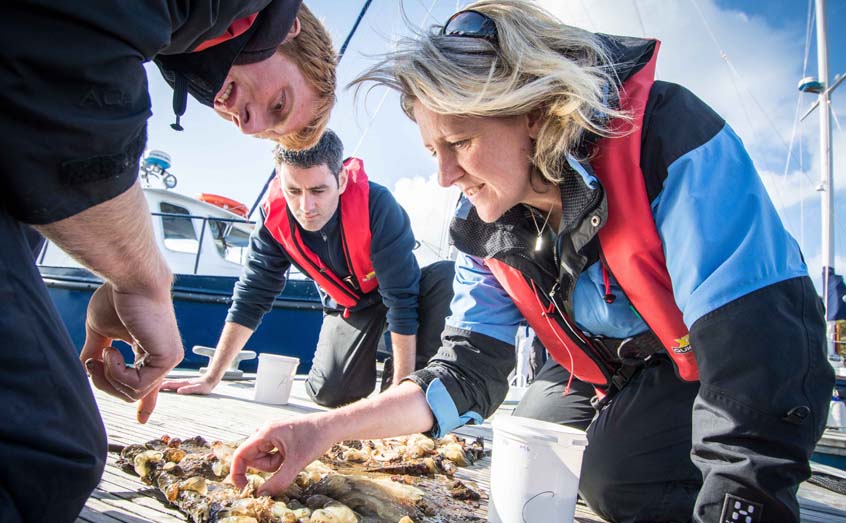SAMS news room
Preparing Scotland for an alien invasion

Raccoons, muntjac deer, plants that cause flooding, and mussels that clog up water pipes are among the new problem species that are likely to arrive in Scotland over the next decade and pose a serious threat to nature or people.
More than 1,000 invasive non-native plants, animals and other organisms are already established in Scotland including the grey squirrel, rhododendron, Japanese knotweed, mink and New Zealand flatworm.
Now, in an independent study for the Scottish Government, a team of experts including Prof Elizabeth Cottier-Cook of SAMS, has predicted other non-native species that could arrive, establish and have negative impacts on biodiversity and ecosystems, economies or human health over the next 10 years. Led by the UK Centre for Ecology & Hydrology (UKCEH) and NatureScot, the report also highlights how these species are likely to arrive.
Prof Cottier-Cook led the study’s marine team, which highlighted the sea snail Crepidula fornicate as one of the top 10 priority species that could arrive in Scotland. The snail, commonly known as the slipper limpet, can damage oyster fisheries.
The top 10 priority list was drawn up from a possible 171 possible new arrivals.
Freshwater biodiversity, which is culturally and economically important in Scotland, is considered to be particularly vulnerable because river and lake ecosystems already face other pressures such as climate change, overexploitation, sewage, nutrient pollution and recreation activities which can exacerbate the impacts of invasive non-native species.
The recent promotion of tourism in northern Scotland has led to exceptional increases in the number of visitors to this region, while national legislation has opened up access to watersports. The experts say there are therefore increased pathways for invasive non-native species to be transported into and throughout Scotland via vehicles, boats, equipment and clothing.
Other species on the priority list include muntjac deer, which could expand their range from other parts of Britain, as well as raccoons, which are kept within zoos and private collections and may escape or be released into the wild. Muntjac damage trees and shrubs and, the experts say, threaten Scotland’s plans for woodland expansion, while raccoons prey on native species, affect farm production and spread potentially fatal diseases including rabies.
The most common pathways for arrival of non-native species in a new region is through the import of produce and ornamental plants which are either invasive and then expand into the wild or which contain hidden species.
UKCEH ecologist Professor Helen Roy, an expert on invasive non-native species, led the ‘horizon scanning’ study, which is a systematic examination of information to identify potential threats and risks.
Professor Roy, who was also co-chair of a major global report on invasive non-native species for IPBES, explains: “Prevention is the best way to manage biological invasions , so we would urge people to follow simple biosecurity measures outlined in campaigns such as “Check, clean and dry” and “Be Plant Wise”. Everyone can make a difference in preventing the introduction and spread of invasive non-native species.”
The report, Provision of horizon scanning and analysis of pathways of spread of invasive species into Scotland, will inform national and local strategies and action to reduce the threat of biological invasions, which are increasing year on year.
Prof Cottier-Cook said: “I’m delighted with the work done by the marine team to identify non-native threats to the marine environment. Horizon scanning marine invasives can be tricky, given the diversity of these habitats and number of vectors through which non-native species can travel.
By considering what may be coming next, we can reduce the risk and the impact of such arrivals. Changes in the terrestrial environment can often be more obvious, as we see the changes with our own eyes. Effective monitoring of ocean habitats can be more difficult, but is equally important.”
The report is available on the Scottish Government website.
The number of non-native species being introduced to new regions around the world is increasing year on year. Up to 14% of these species in the UK are considered invasive.
